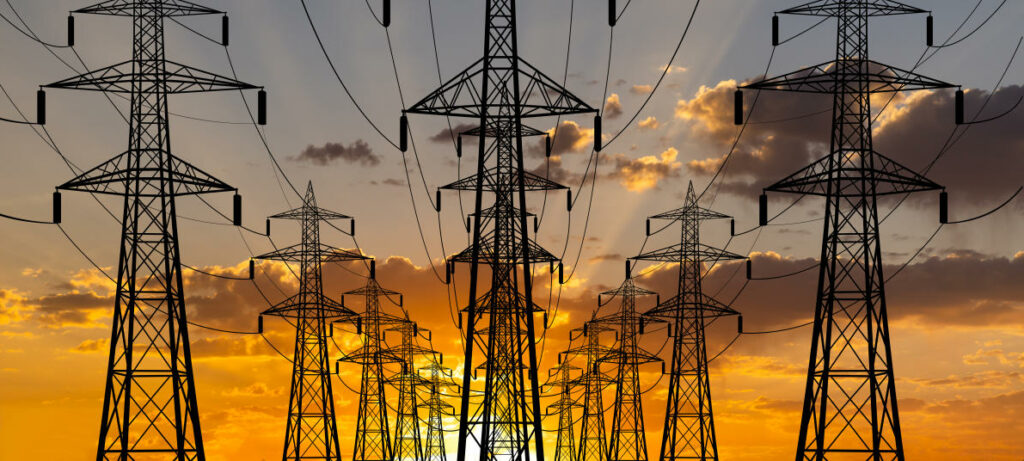The Washington Post reports that “Solar panels and windmills are the fastest-growing sources of power in the United States, accounting for 80 percent of new energy being added to the grid. Yet Republican lawmakers and Trump administration officials remain intent on stifling clean energy progress in America…even as China races ahead.” Ha ha what dumbos. Not that China isn’t in fact building coal plants at a massive pace. But the big point, other than that the experts who say here are not necessarily representative of the range of opinion so much as the Washington Post’s opinion, is that the reason wind and solar account for 80% of new energy being added to the American grid is that politicians there have been backing the supposed “green energy transition” a lot more single-mindedly than their Chinese counterparts. Not to mention stifling the development of almost everything through a kind of pale green NIMBYism for decades.
The article relies on analysis from a think tank called Energy Innovation which boasts “We provide objective policy analysis to cut emissions at the speed and scale needed to confront the climate crisis.” Objective thus meaning conclusion first, analysis afterwards. A potential source of bias the article missed.
Further down the WaPo article claims:
“Tech firms and their industry groups say eliminating the tax incentives for clean power hamstrings their ability to compete with Chinese AI development. They also say it could lead to soaring electricity prices in the United States.”
Oh do they? Who exactly? Aha. It would be “the Data Center Coalition and the Clean Energy Buyers Association”. The latter, plainly, has an alternative-energy dog in the fight. As for the former:
“As the voice of the data center industry, DCC advocates for a highly skilled and diverse technology workforce, greater access to clean energy, and competitive business and tax policies to support the growth and success of this essential business sector.”
So the experts who say are, again, the experts who say what the journalists want to hear. But there are other experts, even at the U.S. Department of Energy, who say instead that what’s putting American energy at risk, and the AI industry, is the maniacal insistence on getting rid of what works for what does not. Shouldn’t a journalist check it out?
Heck no. Instead that piece goes on, again missing the point, that:
“The wind and solar electricity that China added to its power grid in just the first five months of this year is more than quadruple all the new electricity the U.S. added to its grid from all sources in 2024. China is simultaneously rapidly expanding its fleet of fossil-fuel and nuclear plants.”
Oh. Did you say fossil fuel? My my. And nuclear? What of America? Alas:
“The Trump administration plans to accelerate new electricity generation from natural gas and nuclear power, but those efforts will take years, experts warn. There are no major new nuclear plants under construction, and they can take a decade or more to build. A global backlog of gas turbines means it can take five years just to build a single gas-powered plant.”
So the problem is that American governments, federal and state, are stifling energy and investment generally whereas the Chinese government plunges recklessly ahead with whatever the Politburo currently wants, from backyard steel to an EV in every pot. Neither approach is desirable but they do produce superficially very different results, for those who believe everything critics of the American government say and everything boosters of the Chinese one say.
Thus a New York Times item about China pulling away in the race is remarkable for its capacity to believe what the Communist government of China says and not the elected government of the USA, to put a tendentious spin on everything related, and to see what it expected to see not what is actually there.
For instance:
“In China, more wind turbines and solar panels were installed last year than in the rest of the world combined. And China’s clean energy boom is going global. Chinese companies are building electric vehicle and battery factories in Brazil, Thailand, Morocco, Hungary and beyond.”
All of them arms of the state, making decisions dictated by politicians who also censor the press so they have no idea what’s really going on, not by entrepreneurs who must profit or perish. As for those clods:
“At the same time, in the United States, President Trump is pressing Japan and South Korea to invest ‘trillions of dollars’ in a project to ship natural gas to Asia. And General Motors just killed plans to make electric motors at a factory near Buffalo, N.Y., and instead will put $888 million into building V-8 gasoline engines there.”
Right. Because GM is owned by Trump? No. Because it wants to make cars people want not cars journalists want them to want. The Times isn’t buying it, so to speak:
“The race is on to define the future of energy. Even as the dangers of global warming hang ominously over the planet, two of the most powerful countries in the world, the United States and China, are pursuing energy strategies defined mainly by economic and national security concerns, as opposed to the climate crisis. Entire industries are at stake, along with the economic and geopolitical alliances that shape the modern world.”
Or not. Maybe economies are hugely complex and automobiles, while important, are just a small part of the big picture. But now comes a sinister twist:
“The Trump administration wants to keep the world hooked on fossil fuels like oil and gas, which have powered cars and factories, warmed homes and fueled empires for more than a century. The United States is the world’s largest producer of oil and the largest exporter of natural gas, offering the potential for what Mr. Trump has called an era of American ‘energy dominance’ that eliminates dependence on foreign countries, particularly rival powers like China.”
Hooked. Boo addiction! Boo Trump! Yay Communism with its keen business sense:
“China is racing in an altogether different direction. It’s banking on a world that runs on cheap electricity from the sun and wind, and that relies on China for affordable, high-tech solar panels and turbines. China, unlike the United States, doesn’t have much easily accessible oil or gas of its own relative to its huge population. So it is eager to eliminate dependence on imported fossil fuels and instead power more of its economy with renewables. The dangers for China of relying on politically unstable regions for energy were underscored recently when Israel attacked Iran, which sells practically all its oil exports to China.”
You see? They regard Trump’s motives as malign and his vision as cloudy, whereas the heirs of Mao are as wise as they are kind. And so they are winning:
“While China still burns more coal than the rest of the world and emits more climate pollution than the United States and Europe combined, its pivot to cleaner alternatives is happening at breakneck speed. Not only does China already dominate global manufacturing of solar panels, wind turbines, batteries, E.V.s and many other clean energy industries, but with each passing month it is widening its technological lead.”
Except for the part where the U.S. is still the world’s leading economy by a mile, and China is facing an interlocking set of crises financial, demographic and ideological. But you’d never know it reading the Times.



"Cheap electricity from the sun and wind". I wonder where in the world this occurs, Certainly not in any industrialised nation.
Last time I checked,China was still building a new coal plant per week.So obviously they aren't getting rid of fossil fuels antime soon.